Disclosure: This article contains affiliate links. We may earn a commission from purchases at no extra cost to you, which helps our travel content.
The postcard version of Rio de Janeiro—golden beaches dotted with bronze bodies, samba rhythms pulsing through cobblestone streets, and that iconic Christ the Redeemer blessing it all from above—tells only half the story. As a 61-year-old novelist who's spent decades crafting tension on the page, I've discovered that Rio offers a far more visceral way to experience suspense: through heart-pounding adventure. After twenty years of mystery writing in Pittsburgh and another decade living as an expat in Chennai, I've developed a particular appreciation for cities with hidden dimensions. Rio doesn't disappoint. This sprawling Brazilian metropolis serves up adrenaline with the same generous spirit it does caipirinhas—strong, intoxicating, and leaving you craving more. During my recent solo week exploring Rio's extreme side, I discovered that age is truly just a number when the thrill of the unknown beckons. This isn't your standard beach vacation guide—it's for those who hear the call of adventure echoing from the favelas to the rainforests, from mountain peaks to underground nightlife. Welcome to my Rio, where every heartbeat counts.
Taking Flight: Hang Gliding from Pedra Bonita
There's something profoundly humbling about standing atop Pedra Bonita at 1,700 feet, staring down at the toy-like buildings of São Conrado below, knowing that in moments you'll be airborne with nothing but a lightweight frame and fabric between you and gravity's insistent pull.
At sixty-one, I'm often met with raised eyebrows when I tell younger travelers about my hang gliding adventures. But here in Rio, age discrimination doesn't exist in the realm of controlled falling. My instructor Paulo—a leathery Brazilian with thirty years of flight experience—simply nodded approvingly at my enthusiasm, helped adjust my GoPro chest mount for optimal footage, and proceeded with the safety briefing.
'Just run until there is no more mountain,' he instructed with a casual wave toward the wooden ramp that seemed to vanish into the blue beyond.
The actual takeoff remains a blur in my memory—a few running steps, a moment of sheer terror as the ground disappeared, and then... transcendence. For nearly 30 minutes, Paulo and I rode thermal currents over the lush Tijuca Forest, banking in wide arcs that offered 360-degree views of Rio's dramatic coastline. We soared past the massive granite dome of Pedra da Gávea, catching glimpses of tiny climbers on its face, before gliding over the mansions of São Conrado and finally landing with surprising gentleness on Pepino Beach.
The experience costs around R$550-650 (approximately $110-130), including transportation from your hotel, professional tandem flight, and photos/videos. Worth every centavo for what amounts to the most spectacular urban aerial tour imaginable.
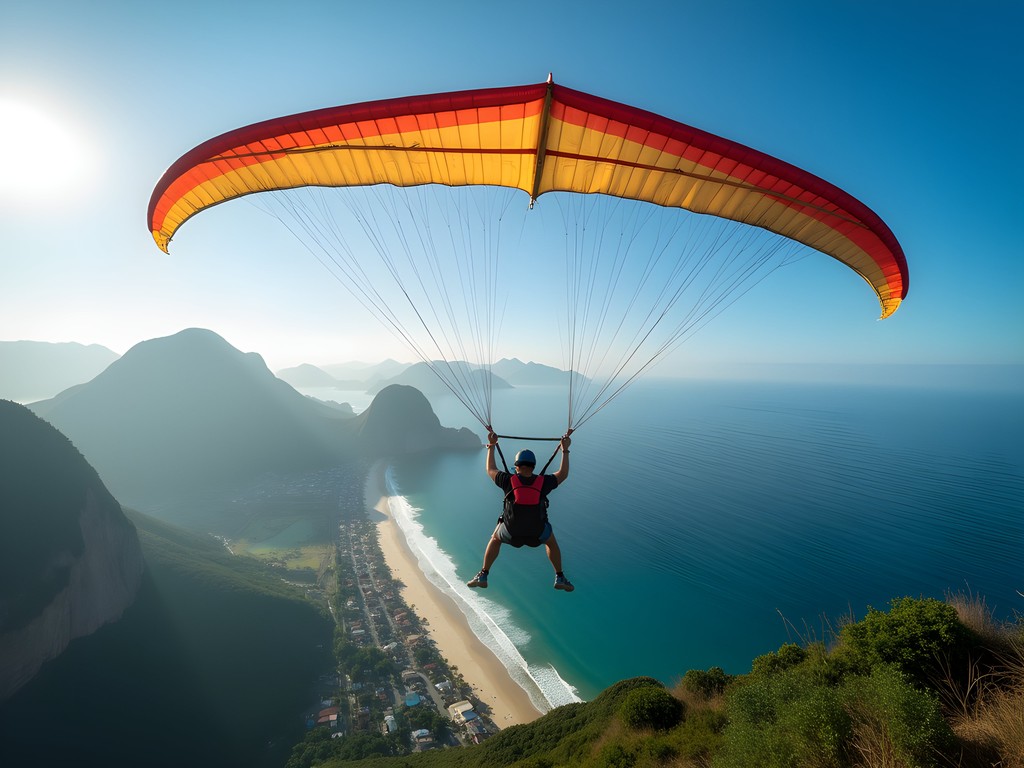
💡 Pro Tips
- Book your flight for early morning when thermal conditions are ideal and views are clearest
- Wear secure, closed-toe shoes that won't fall off mid-flight
- Consider taking anti-nausea medication if you're prone to motion sickness
Vertical Pursuits: Conquering Rio's Granite Giants
Rio's dramatic topography isn't just for admiring from afar. The city is surrounded by massive granite monoliths that have been luring rock climbers for decades, offering everything from beginner routes to technical multi-pitch challenges that would give Alex Honnold pause.
Despite my modest climbing experience—mostly gained at indoor gyms during Pittsburgh winters—I was determined to scale at least one of Rio's iconic rock faces. After consulting with local climbing guides, I settled on Morro da Urca, the smaller dome that serves as the first cable car stop en route to Sugarloaf Mountain.
Companies like Rio Hiking offer guided climbs tailored to various experience levels. My guide, Marcelo, assessed my abilities with diplomatic tact before selecting the K2 route—challenging enough to feel accomplished but not so difficult that I'd be stranded on a ledge questioning my life choices. Before setting out, I made sure my hydration backpack was filled and secure, as Rio's humidity demands constant water intake even in fall.
The climb itself was a three-hour meditation in focus and determination. Each handhold required careful consideration, each foot placement a deliberate act of trust. But the rewards were immediate and profound: halfway up, we paused on a natural platform offering views of Copacabana that no tourist viewpoint could match. By the time we reached the summit, emerging near surprised cable car passengers, I felt that unique satisfaction that comes only from earning a view through physical effort.
For those seeking even greater challenges, Sugarloaf itself offers more technical routes, while the imposing face of Pedra da Gávea presents what many consider Rio's ultimate climbing adventure—a full-day commitment culminating in perhaps the city's most spectacular summit panorama.
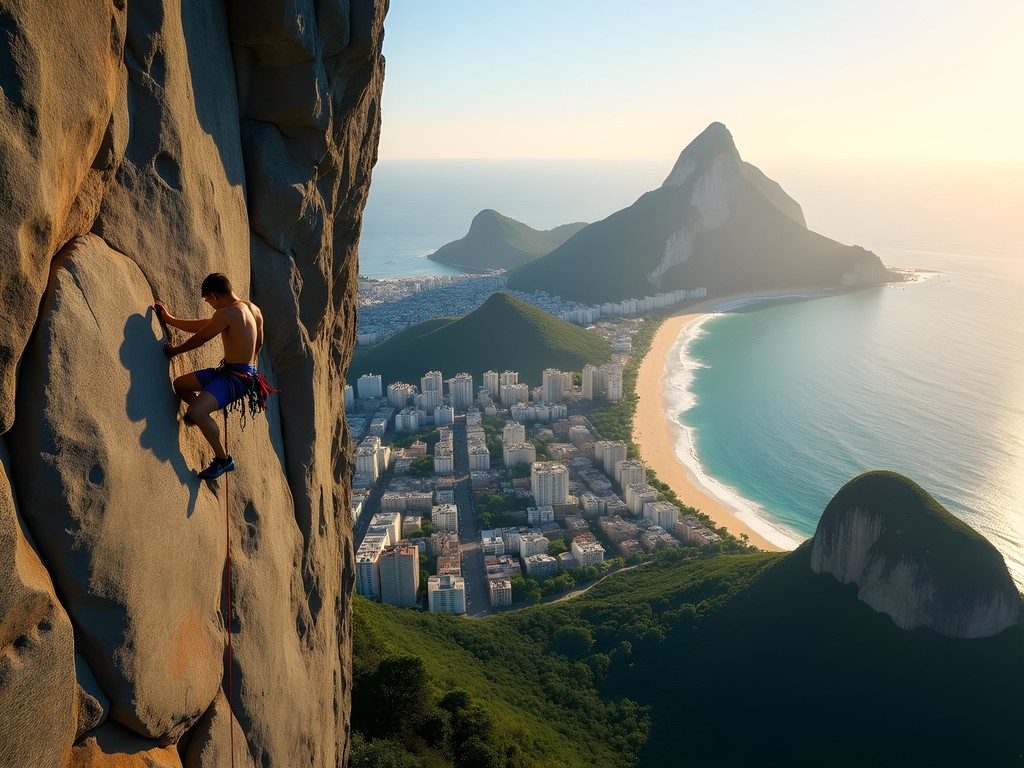
💡 Pro Tips
- Book with certified guides who provide all necessary equipment and safety gear
- Start early to avoid afternoon heat and potential thunderstorms
- Bring twice as much water as you think you'll need—dehydration at height is dangerous
Favela Adventures: Beyond the Tourist Trail
The favelas of Rio have evolved dramatically in the past decade. Once strictly off-limits to tourists, many communities have developed grassroots tourism initiatives that provide authentic experiences while directly benefiting local residents. As a novelist perpetually hunting for stories beyond the obvious narrative, I found these hillside communities to be among Rio's most fascinating adventure landscapes.
After careful research, I connected with Favela Phoenix, a community-led tour organization in Rocinha, Brazil's largest favela. My guide, Eduardo, grew up in these labyrinthine alleyways and offered something no conventional tour could—genuine insider access. The adventure began with a thrilling motorcycle taxi ride up steep, winding roads, weaving through traffic in a way that immediately recalibrated my definition of 'extreme sport.'
Once inside, we embarked on a four-hour walking tour that combined history, politics, architecture, and pure adrenaline. We navigated narrow passageways barely wide enough for two people to pass, climbed makeshift staircases connecting different levels of the community, and traversed rooftops offering staggering views of the South Zone below. The physical challenge was considerable—Rocinha is essentially built on a near-vertical hillside—but the cultural immersion was the real thrill.
We visited local artists' studios, community centers, and a rooftop bar where I sampled homemade caipirinha variations while chatting with residents about everything from Brazilian politics to the upcoming football season. Eduardo insisted I try on his polarized sunglasses for the intense reflection off the metal rooftops—a practical tip I wouldn't have considered but proved essential.
This isn't poverty tourism; it's engagement with a complex, vibrant community that represents a crucial dimension of Rio's identity. The physical adventure of navigating the favela's vertical landscape combines with intellectual and emotional engagement that leaves lasting impressions far beyond the typical tourist experience.
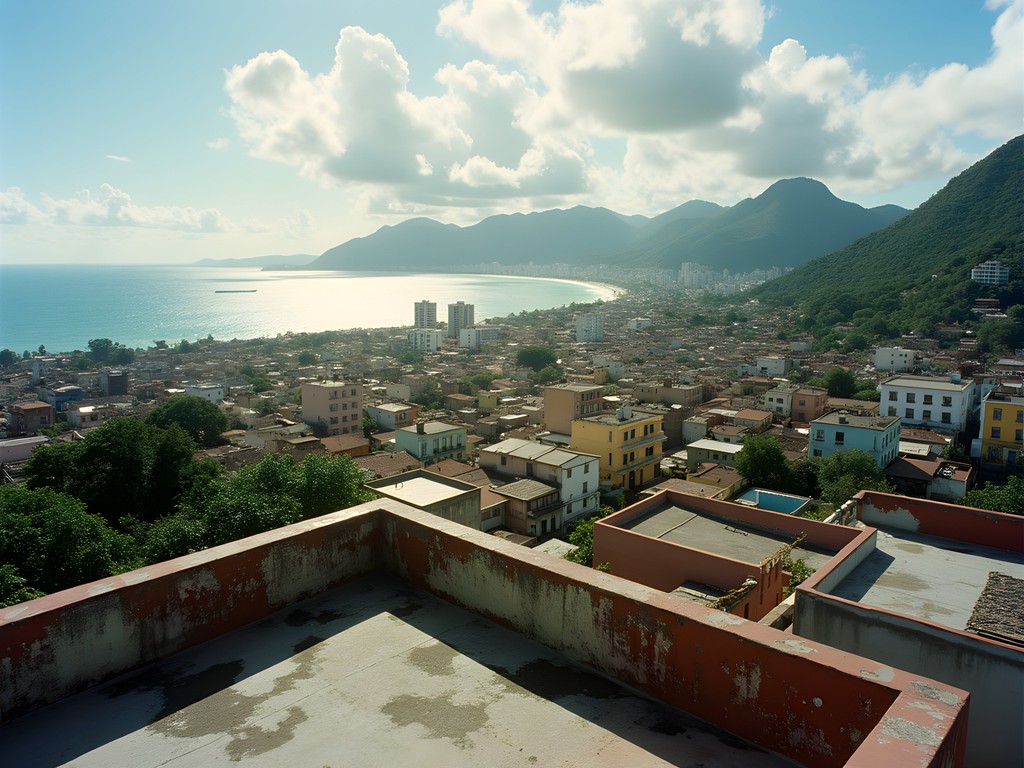
💡 Pro Tips
- Only visit favelas with reputable, community-based tour organizations
- Bring small bills for supporting local businesses along the way
- Wear sturdy shoes with good traction for the steep, sometimes slippery pathways
Jungle Expeditions: Tijuca's Hidden Trails
Most visitors to Rio know Tijuca National Park only as the forested backdrop to postcard views or as the home of Christ the Redeemer. Few realize it's actually the world's largest urban rainforest—a 32-square-kilometer wilderness reclaimed from coffee plantations in the 19th century and now teeming with adventure possibilities.
Having grown up in Pittsburgh's relatively tame parks, I found Tijuca's wild density both intimidating and irresistible. After consulting with local hiking groups, I opted for the challenging Pico da Tijuca trail, a 7-kilometer round trip to the forest's highest point at 1,021 meters. Before setting out, I made sure my trail running shoes were properly laced—their aggressive tread pattern proved invaluable on the often muddy, root-tangled path.
The trail begins deceptively gentle before transforming into a steep scramble requiring hands and feet. Fall in Rio still brings afternoon rain showers, creating slick conditions that demanded full concentration. About halfway up, the path narrows along a ridge with precipitous drops on both sides—a section that had my mystery writer's mind conjuring all manner of dramatic scenarios.
The physical challenge is substantial, but the sensory immersion is what makes Tijuca truly extraordinary. The forest envelops you in a symphony of sounds—distant waterfalls, calling monkeys, and countless birds creating a natural soundtrack unlike anything in northern cities. The air grows noticeably cooler and more oxygen-rich as you ascend, carrying complex scents of vegetation and earth.
At the summit, I found myself alone except for a pair of circling hawks, with 360-degree views extending from Guanabara Bay to the distant mountains of Pedra Branca State Park. The sprawling city below seemed impossibly remote, though its famous landmarks remained recognizable—a perfect metaphor for how this adventure offers perspective on Rio that most tourists never experience.
On the descent, I took a detour to the secluded Cascatinha Waterfall, where the brave can take a bracing natural shower in waters flowing from the mountain's peak. The entire expedition consumed most of a day but left me with a profound appreciation for Rio's wild side.

💡 Pro Tips
- Start no later than 8 AM to ensure you're off the mountain before afternoon rains
- Hire a local guide if you're unfamiliar with rainforest hiking—getting lost is a genuine concern
- Pack a lightweight rain shell regardless of the morning weather forecast
After Dark: Rio's Underground Nightlife Adventure
When the sun sets over Ipanema, Rio's mainstream tourist circuit shifts to predictable hotspots in Lapa and Copacabana. But for those seeking adrenaline of a different sort, the city's underground nightlife offers thrills that rival any daytime adventure. As someone who's chronicled nightlife scenes from Pittsburgh to Chennai, I approached Rio's after-dark landscape with particular interest.
The adventure begins with finding venues that don't advertise their existence. In the warehouse district of Santo Cristo—an area undergoing rapid gentrification ahead of recent development projects—I discovered Casa Matriz through a local DJ I'd met at a café earlier that week. The entrance was unmarked save for a single red light bulb above a metal door. Inside, three floors of industrial space had been transformed into a pulsing electronic music venue where international DJs test new material before taking it to larger clubs.
In Botafogo, Rio's rapidly evolving answer to Brooklyn, I found myself in a former auto repair shop now operating as Fosfobox, where the bass was so powerful my noise-cancelling earbuds became essential equipment—not to block the music but to protect my hearing while still enjoying the immersive sound. The crowd here represents Rio's artistic vanguard, with experimental fashion and dance styles that feel like glimpses of the future.
Perhaps the most thrilling nightlife adventure came in Pedra do Sal, the historic birthplace of samba in Rio's port district. Every Monday night, this ancient stone square transforms into an open-air party where master musicians gather spontaneously. Unlike the choreographed samba shows for tourists, this is authentic, improvisational, and electric with cultural significance. The crowd—a mix of locals from all walks of life, from dock workers to university professors—creates a joyful intensity that feels simultaneously safe and utterly unpredictable.
Navigating Rio's nightlife requires street smarts and preferably local connections. I arranged secure transportation through my hotel concierge, carried minimal cash, and always maintained awareness of my surroundings. The reward was experiencing the creative pulse of a city that truly never sleeps, where each venue feels like discovering a secret society dedicated to the pursuit of collective joy.
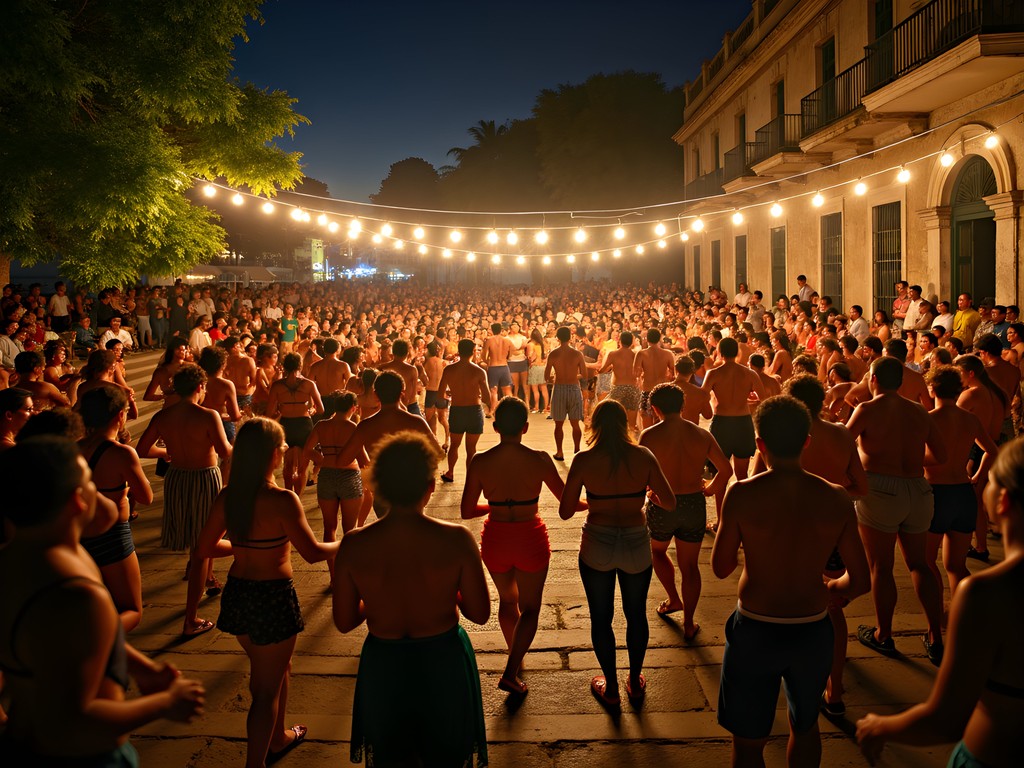
💡 Pro Tips
- Make local connections during daytime activities to get current information on underground venues
- Use ride-sharing apps rather than hailing street taxis when moving between nightlife districts
- Learn basic Portuguese phrases—they'll open doors that remain closed to tourists who make no linguistic effort
Final Thoughts
As my week of Rio adventures drew to a close, I found myself on Arpoador Rock at sunset, watching surfers catch their final waves while the last light gilded Ipanema's famous curve. My body ached pleasantly from the week's exertions—muscles I hadn't challenged in years now reminding me of gravity defied and distances conquered. Rio revealed itself not just as a postcard paradise but as an adventure playground of rare diversity, where urban exploration, natural challenges, and cultural immersion create a perfect trifecta for the experienced thrill-seeker. At sixty-one, I've learned that adventure isn't about proving something but about remaining open to transformation. Rio changed me, as all great adventures do. Whether you come for the climbing, the flying, the hiking, or the dancing until dawn, this remarkable city offers extreme experiences that will redefine your understanding of what's possible—at any age. The question isn't whether you should pursue Rio's adrenaline offerings, but rather: which thrill will you chase first?
✨ Key Takeaways
- Rio's adventure offerings extend far beyond beaches to world-class hang gliding, climbing, hiking and underground experiences
- Age is no barrier to experiencing extreme sports in Rio with proper guides and preparation
- The combination of natural and urban adventures makes Rio uniquely suited for adrenaline-seeking travelers
- Local connections enhance access to authentic experiences away from tourist circuits
📋 Practical Information
Best Time to Visit
April-June or August-October (fall or spring shoulder seasons)
Budget Estimate
$3,000-5,000 for one week excluding flights
Recommended Duration
Minimum 5 days, ideally 7-10 days
Difficulty Level
Challenging

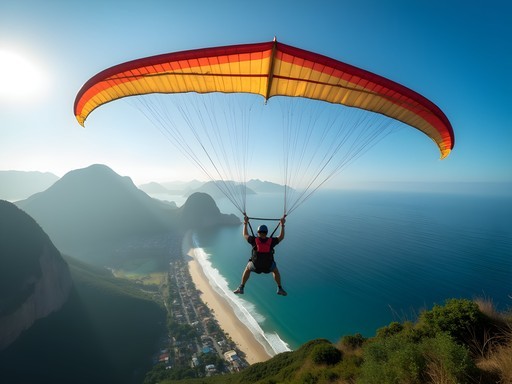
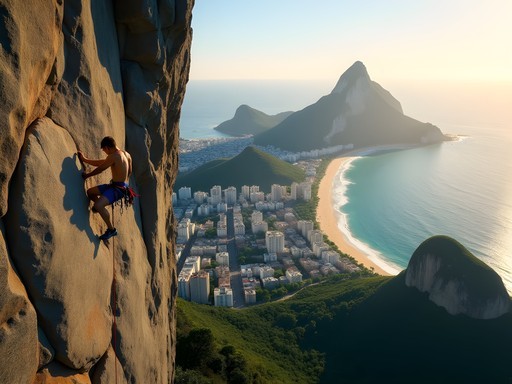
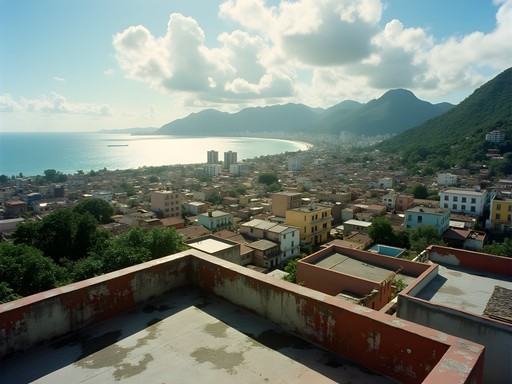
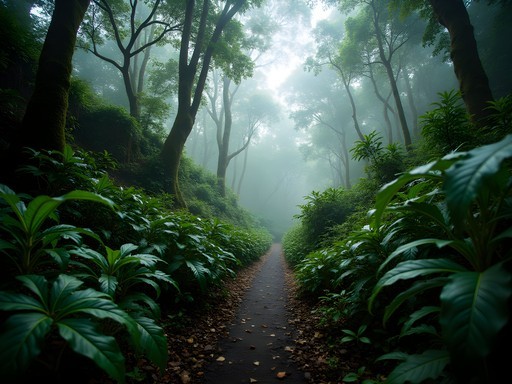





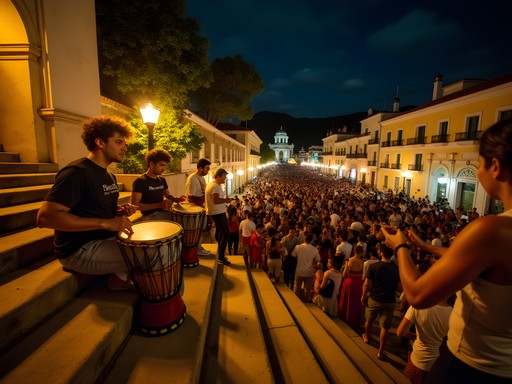
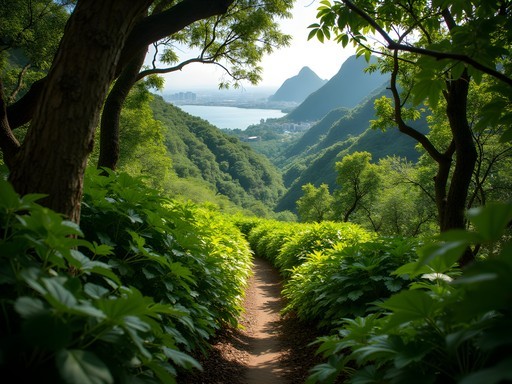
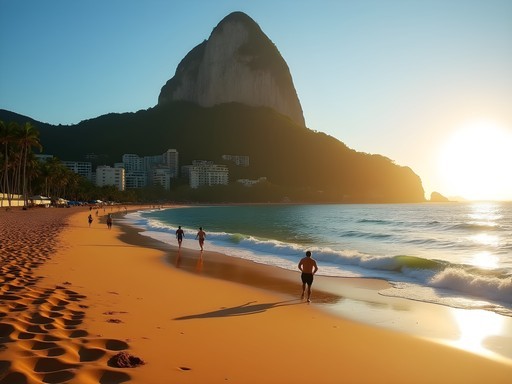
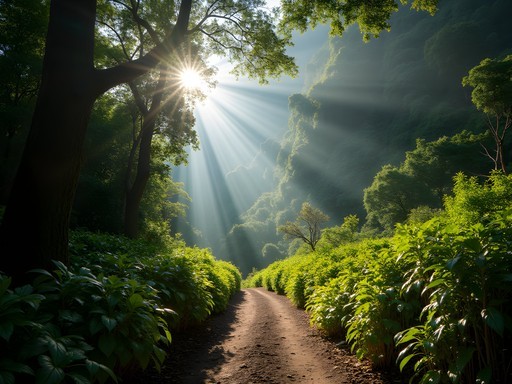
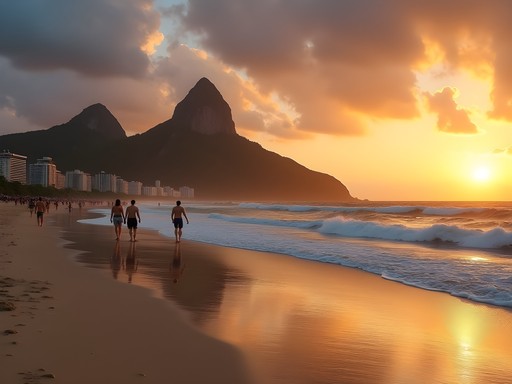
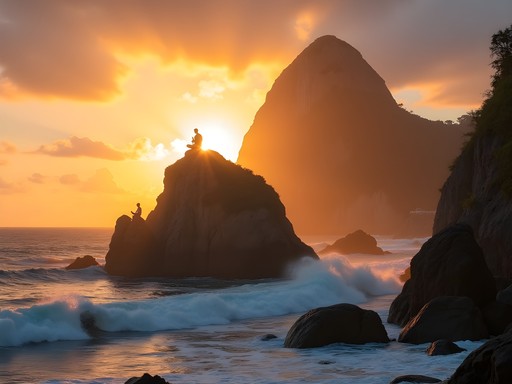
Comments
Marco Flores
Preston, your post brings back all the adrenaline rushes from my trip to Rio last year! The Tijuca Forest trails were the highlight for me - I spent three days exploring different routes and still feel like I barely scratched the surface. There's this one waterfall about 2 hours in from the Barra entrance that almost no tourists visit - locals call it Cascata Escondida. You have to scramble down some sketchy rocks to reach it, but then you have this perfect natural pool all to yourself. For anyone heading there, the rock climbing scene is incredible but don't sleep on the mountain biking options! There are some technical downhill tracks from Corcovado that will test even experienced riders. I went with Rio MTB Tours and they provided great equipment and knew all the hidden trails. Preston - did you try the nighttime kayaking in Guanabara Bay? That was another highlight for me - seeing the city lights from the water while paddling through bioluminescent plankton was magical!
globeone8434
Just booked my hang gliding experience after reading this! Terrified but excited!
Marco Flores
You'll love it! The fear lasts about 3 seconds and then it's pure joy! Best view of Rio you'll ever get.
beachtime
If you're doing the rock climbing, go EARLY! We went to Sugarloaf for climbing and by 10am it was scorching hot. Made the whole experience way more challenging than it needed to be. Also, bring twice as much water as you think you need and definitely use climbing gloves - the granite gets super hot!
photoexplorer
How safe was the favela tour? I've heard mixed things about safety in Rio. Were you with a guide or solo?
Preston Henry
Great question! I went with a local guide who grew up in the community - absolutely wouldn't recommend going solo. The tour was organized through Favela Experience, and they ensure tourism benefits the local community. Always felt safe, but it's definitely about respecting boundaries and going with someone who knows the area.
photoexplorer
Thanks Preston! That's super helpful. Will look them up.
Amit Sullivan
Preston, you've captured the heart-pumping side of Rio beautifully! I was there last year and also did the hang gliding from Pedra Bonita - that moment when you first step off the platform and catch the thermal is something I'll never forget. The way the city unfolds beneath you, with the contrast of urban sprawl against that dramatic coastline... breathtaking. I'd add one thing to your list though: the boat trips out to the islands off Copacabana. We found a local fisherman who took us out at dawn to some spots where we could cliff jump into crystal clear waters. Less organized than your activities, but equally thrilling!
globeone8434
Amit - any chance you remember the name of that fisherman? Heading to Rio in December and that sounds amazing!
Amit Sullivan
His name was Carlos and he usually parks his blue boat near Posto 6. Just walk along early (around 6am) and look for the blue boat with a white stripe. No website, just old school local connections!
luckyqueen
OMG the hang gliding photos are INSANE! 😱 Definitely adding this to my bucket list!
Elena Wells
Preston, this is such a refreshing take on Rio! I was there last summer and wish I'd had this guide. For anyone planning to do these activities on a budget - the hang gliding is worth every penny, but you can save by taking local buses to the launch point rather than the expensive tourist transfers. For Tijuca Forest, I found that early weekday mornings meant having trails almost to myself. One tip I'd add: the local açaí bowls are perfect fuel for these adventures, and way cheaper at neighborhood spots than at beach vendors. Hoping to get back and try that vertical climbing on Sugarloaf you mentioned - looks terrifying but amazing!
nomadbuddy
Elena, great tip about the buses! Did you feel safe using public transport in Rio?
Elena Wells
Generally yes, especially during daylight hours. Just keep valuables secure and be aware of your surroundings like in any big city. The metro is super clean and efficient too!
travelexplorer
OMG this post is EVERYTHING!!! I've been planning a Rio trip for ages but was worried it would just be beaches and partying (which is fine but I need my adventure fix). The Tijuca jungle trails sound amazing! Did you need special permits for any of these activities? SO EXCITED to try that hang gliding!!
greenphotographer
That sunset shot from Arpoador Rock is stunning! What camera setup did you use?
Preston Henry
Thanks! Just my trusty mirrorless camera with a wide angle lens. The light in Rio does most of the work!
wanderlustclimber
Those climbing routes on Sugarloaf look epic! Added to my bucket list immediately.
Venture X
Premium card with 2X miles, $300 travel credit, Priority Pass